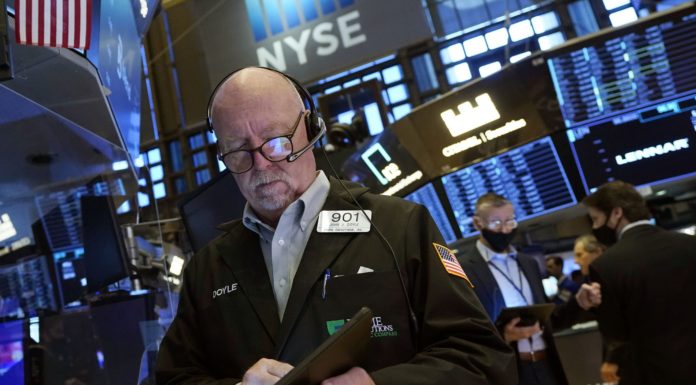(AP) Investors found few, if any, places to safely put their money in 2022, as central banks in the U.S. and around the globe raised interest rates for the first time in years to fight surging inflation, stoking fear of a global recession.
Uncertainty about how far the Federal Reserve and other central banks would go in the fight against inflation sparked a return of volatility. Large swings in stocks were common on Wall Street as the Fed raised its key interest rate seven times and signaled more hikes to come in 2023.
Russia’s invasion of Ukraine and China’s strict COVID-19 policies also contributed to inflation and roiled the global economy as well as markets in Asia, Europe and the U.S.
On Wall Street, the benchmark S&P 500 index had its worst start to a year since 1970. By June, t he index fell into a bear market, a drop of more than 20% from the record high set in early January. The energy sector was the lone winner, benefitting from a spike in oil and gas prices. Technology stocks tumbled after leading the market during the pandemic.
Borrowing money got more expensive. The 10-year Treasury yield, which influences rates on mortgages and other loans, soared, reaching 4.22% in October after starting the year at 1.51%.
Still, climbing yields in the U.S. and abroad sent prices for older bonds already in investors’ portfolios sharply lower. The rout in bonds was particularly painful for fixed-income investors.
Cryptocurrency investors weren’t spared either. Bitcoin shed more than half its value and a number of high-flying companies wound up in bankruptcy court.
— Alex Veiga
Here’s a look back on the key events in markets for 2022:
__
INFLATION AND THE FED
Inflation was the dominant global economic theme this year. Gasoline prices in the U.S. reached $5 a gallon. Companies either raised prices, or kept prices steady but put less in each package. Europe feared running short of natural gas and prices there rose more than in the U.S.
Central banks’ response to inflation overshadowed financial markets in 2022 and could very well do so again next year. As the year began, officials at the Federal Reserve had accepted that inflation was not a temporary phenomenon. Russia’s invasion of Ukraine only made things worse by sending energy and food prices soaring.
Still, it wasn’t until March, when the U.S. government said inflation had approached 8%, that the Fed acted — too little, too late for some pundits and economists. As the year went on the Fed got more aggressive, eventually raising rates seven times by a total of 4.25 percentage points.
Inflation in the U.S. appears to have peaked at 9.1% in June. By year-end, there were hopeful signs as prices for goods fell and rents started declining. But tough inflation talk from the Fed at its last meeting of the year took the steam out of what had been a fourth-quarter rally for stocks.
___
THE BEAR ROARS
Wall Street’s brutal year left few stocks unscathed, and the vast majority fell into a bear market under the weight of fast-rising interest rates.
After peaking on the very first trading day of 2022, it took about six months for the S&P 500 to drop more than 20%. The biggest losers were the stocks that had performed the best in the rally that followed the coronavirus crash.
Back then, high-growth tech stocks roared the highest thanks to the juice provided by super-low interest rates. But in the cold light of 2022, those stocks suddenly looked the most expensive and the most vulnerable as the Fed hiked interest rates to their highest level in 15 years.
The pain did not discriminate much, though. Seven out of 10 stocks in the S&P 500 fell in 2022, as of Dec. 21. Many analysts expect more pain in early 2023 before things get better.



